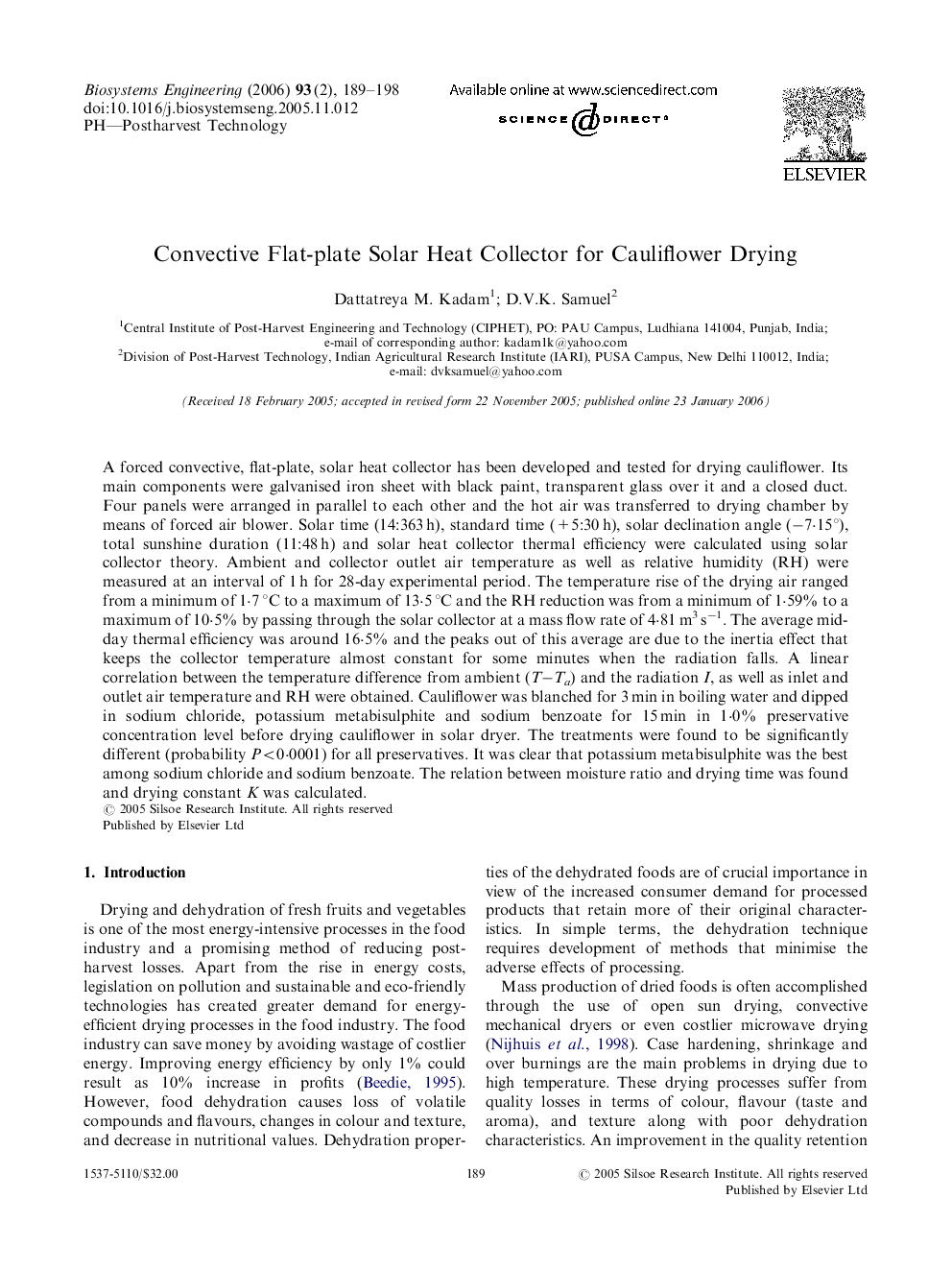| Article ID | Journal | Published Year | Pages | File Type |
|---|---|---|---|---|
| 1712784 | Biosystems Engineering | 2006 | 10 Pages |
A forced convective, flat-plate, solar heat collector has been developed and tested for drying cauliflower. Its main components were galvanised iron sheet with black paint, transparent glass over it and a closed duct. Four panels were arranged in parallel to each other and the hot air was transferred to drying chamber by means of forced air blower. Solar time (14:363 h), standard time (+5:30 h), solar declination angle (−7·15°), total sunshine duration (11:48 h) and solar heat collector thermal efficiency were calculated using solar collector theory. Ambient and collector outlet air temperature as well as relative humidity (RH) were measured at an interval of 1 h for 28-day experimental period. The temperature rise of the drying air ranged from a minimum of 1·7 °C to a maximum of 13·5 °C and the RH reduction was from a minimum of 1·59% to a maximum of 10·5% by passing through the solar collector at a mass flow rate of 4·81 m3 s−1. The average mid-day thermal efficiency was around 16·5% and the peaks out of this average are due to the inertia effect that keeps the collector temperature almost constant for some minutes when the radiation falls. A linear correlation between the temperature difference from ambient (T−Ta) and the radiation I, as well as inlet and outlet air temperature and RH were obtained. Cauliflower was blanched for 3 min in boiling water and dipped in sodium chloride, potassium metabisulphite and sodium benzoate for 15 min in 1·0% preservative concentration level before drying cauliflower in solar dryer. The treatments were found to be significantly different (probability P<0·0001) for all preservatives. It was clear that potassium metabisulphite was the best among sodium chloride and sodium benzoate. The relation between moisture ratio and drying time was found and drying constant K was calculated.
